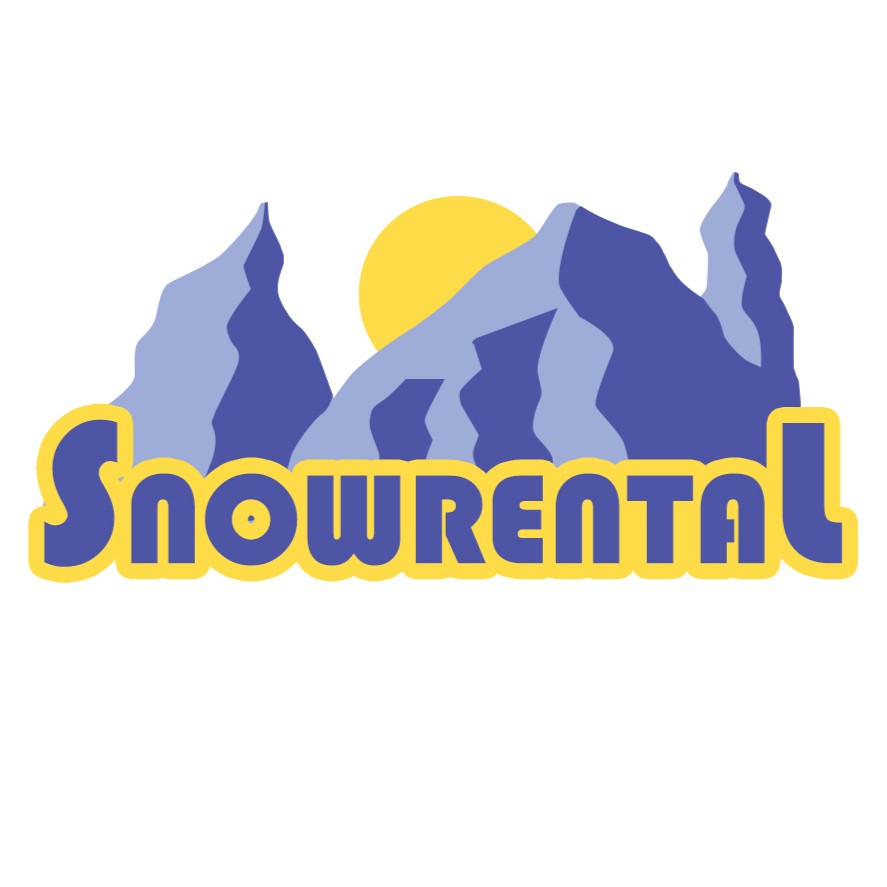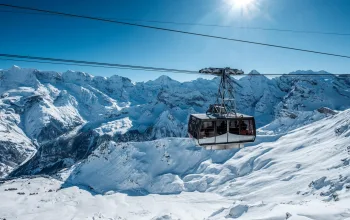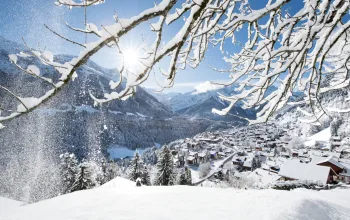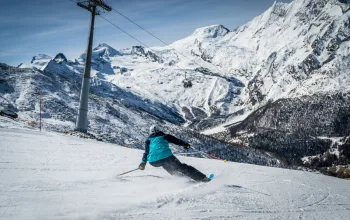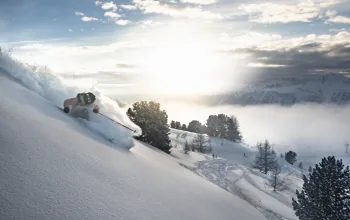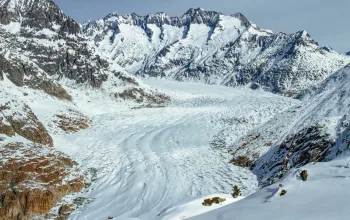A lovely village on the French side of the French/German language border within Switzerland. Home for many years to actor David Niven and still to the biggest annual ballooning festival in the Alps each January. More than 250km of piste are available on the Gstaad Mountain Rides pass which includes the mountain railway which conveniently runs between base lifts at most of the resorts en route.
Mountain
Château-d'Oex's local ski area on La Braye, reached by cable-car - is of modest dimensions: 25km (16 miles) of trails served by 10 lifts and a respectable 802 metres (2631 feet) vertical. A second ski area on Mont Chevreuils, a short distance from the village, has ceased operations. What is not immediately apparent to anyone just passing through is that you're actually in one of the world's largest ski pass areas, certainly Switzerland's largest, the Ski Gstaad Pass, of which Château-d'Oex's near neighbours of the Gstaad Superski area are just a part. Public service trains and buses take skiers on the single pass over to a selection of 15 different resorts, together offering 600km (375 miles) of runs. Famous resorts included are Adelboden, Lenk, Les Diablerets, Les Mosses, Leysin, Villars and of course Gstaad. The minimum duration for this pass is 4 days. This means that intermediates and expert skiers have a vast choice of runs including, from February onwards, the epic descent from the top of the Diablerets glacier down 13km (8 miles) to the Gstaad road. The local Swiss Ski School also organises high mountain touring, off piste guiding, ski mountaineering and heli-skiing for the more adventurous. Beginners will enjoy the chance to stay in an authentic Swiss village, learn to ski on the peaceful and largely gentle slopes of La Braye above the resort, but then have the option of doing "more than just ski or 'board", with the easy access to Gstaad and larger Swiss cities beyond. Intermediates can explore all of the ski areas, but the local slopes at La Braye above the resort itself will provide several days entertainment. The largest and most popular area nearby is above Schönried or Saanenmöser, the first and second rail stop respectively a few minutes after Gstaad. Now all inter-linked right over to St Stephan beyond Zweisimmen, this is a wonderful area of many long blues and reds and where, with higher bases than Château-d'Oex, top-to-bottom snow lasts longer (although Château-d'Oex's ski area is in any case accessed by cable-car so the snow fields can be reached without hassle even when the lower slopes thaw at the end of the season). A second large intermediate-friendly skiing area, not quite so big but closer still, joins the skiing above Rougemont, Chateau-d'Oex's French speaking neighbour, and to that above the resort after it, Saanen (first of the German-speaking villages). Experts have many opportunities in the region, some already mentioned. Closer to home Château-d'Oex has several black-graded descents including a rather long one down from Monts Chevreuils to Les Moulins, above the village.
Families
A good choice for families, this centre is very rare for a village its size in Switzerland in that the Swiss ski school offers day care for children from age one up. Many of the hotels are also very child friendly, notably the Beau Sejour and the Ermitage, which has a children's playroom. If your children are just starting to ski then there are few more family-friendly gentle slopes than the lower slopes at les Moulins. Of course kids love getting on the mountain train to travel between resorts and then hopping on the gondola to try a new ski area every day. Children up to age nine receibe free lift tickets. Getting off at Gstaad and wandering down the pedestrianised high street to the big swimming pool complex is popular too. Château-d'Oex's cafe, especially for older children - with non-alcoholic drinks and a games room in the basement is another rarity. Later in the season the crazy golf course opens, but before that the natural ice rink goes down well, as does the night skiing twice a week, or maybe toboganning or a sleigh ride.
Eating Out
There are around a dozen restaurants in Château-d'Oex, most of them cosy affairs linked to the larger hotels. The majority naturally serve traditional Swiss cuisine, but there is an Italian outlet and an excellent Chinese. Once again it is easy to take the train along the valley to sample other restaurants, the greatest selection up to the highest gourmet standards available in Gstaad of course. Of the traditional restaurants local to Château-d'Oex, the cuisine in the Hotel Bon Accueil's restaurant has a particularly high reputation, and the Ermitage and Le Chalet are amongst the other more popular choices.
Apres
There are few resorts where you have the option of stopping off in a cafe or bar as you come off the slopes 20km from your hotel and then staying for a coffee or an après ski tipple without having to worry about missing the last ski bus home. Thanks to the area lift pass it's possible to get a train back to Château-d'Oex from Zweissemen, Saanenmoser, Rougemont, Saanen or Gstaad almost any time of the evening. One popular option is to stop off in Gstaad en route home and take an après ski dip at the wonderful swimming pool complex. Another is to head back to Château-d'Oex to shower, change and maybe eat, then head for Gstaad's legendary après ski opportunities. There are a dozen cosy bars and restaurants in Château-d'Oex itself should you wish to stay closer to home, and La Bamba disco is often lively.
Boarding
Snowboarders have the same huge choice as skiers with the Ski Gstaad Pass. Most of the resorts in the area have snowboard parks, so this could be the area with the most snowboard-parks-on-one-pass in the world if anyone cares enough to add up such things (probably not a cool thing to do!) There are three terrain parks in the area, in the larger Schönried - Saanenmöser sector, and a further three above Les Diablerets and Villars. The year-round park on the Diablerets glacier helps this summer glacier skiing to be dominated by 'boarders throughout the warmer periods of the year, with numerous international camps.




